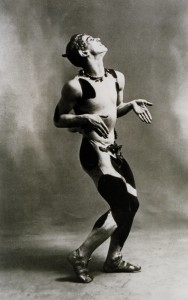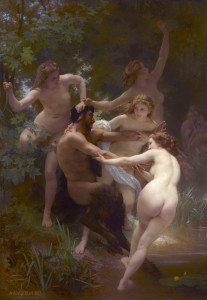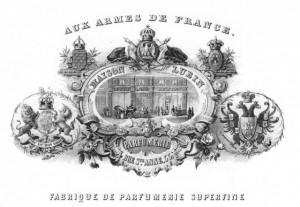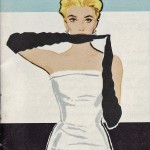Faun by Ravel
While I was unable to find much information on Ravel, the house which released Faun in 1945, I was able to find out that the Ravel Perfume Corp was established in Nice, France and later had a presence in New York City. The firm was fairly prodigious for its time, releasing nineteen perfumes over the span of twenty years, with names like Pagan (1945), Ecstasy ( 1950) and Moments-De-Passion (1955). While I have not had the opportunity to sample these other creations, given the character of Faun (as well as the none-too-subtle monikers), I would imagine them to be fairly sensual.
The fragrance has a bright, hesperidic opening of bergamot lightened and brightened by the presence of aldehydes. Immediately upon application, however, one is aware of the presence of an underlying warmth in the fragrance, a precursor of the fragrance’s ultimate personality. There is a slight hint of sweetness, courtesy of a subtle spicy fruit note not unlike the warm plum note of Rochas Femme which hints at sensuality and the scent of skin. The sweetness is fleeting however and serves largely as a bridge to the fragrance’s true character.
Overall, Faun is reminiscent of woods, moss and warm fur. While I have been unable to confirm any specific fragrance notes, I also detect a note of patchouli, enhancing the fragrance’s warm sensation. While any of these notes can be pushed to an extreme, creating an aggressive fragrance, all of these elements are rendered lightly in Faun. As the scent warms on the skin, it settles nicely and conveys the warmth of bodies and forest floors. While the scent definitely retains a distinct animalic character, it is tastefully rendered and suggests intimacy as opposed to vulgarity. Rather than the scent of the satyr himself, Faun seems to me more the scent of the beautiful nymph after a prolonged embrace with her forest companion.
While the scent of fur perfumes can be difficult to imagine if one has never experienced this note, its animalic nature is reminiscent of the leather elements present in scents such as Chanel’s Cuir de Russie, softened and warmed by the mossy, pungent notes of oakmoss not unlike those in vintage Miss Dior. Faun is undoubtedly a scent of its time and those unaccustomed to vintage fragrances may find it challenging. However, if you are a fan of sensuous leather and oakmoss fragrances and of the sexuality their warmth and animalic notes allude to, this may be worth seeking out.
Notes: Hesperidic Notes, Floral Notes, Wood Notes, Animalic Notes






